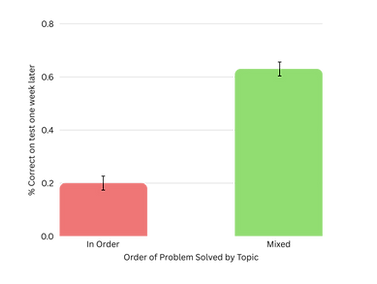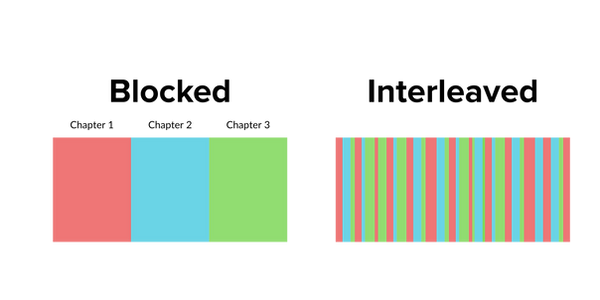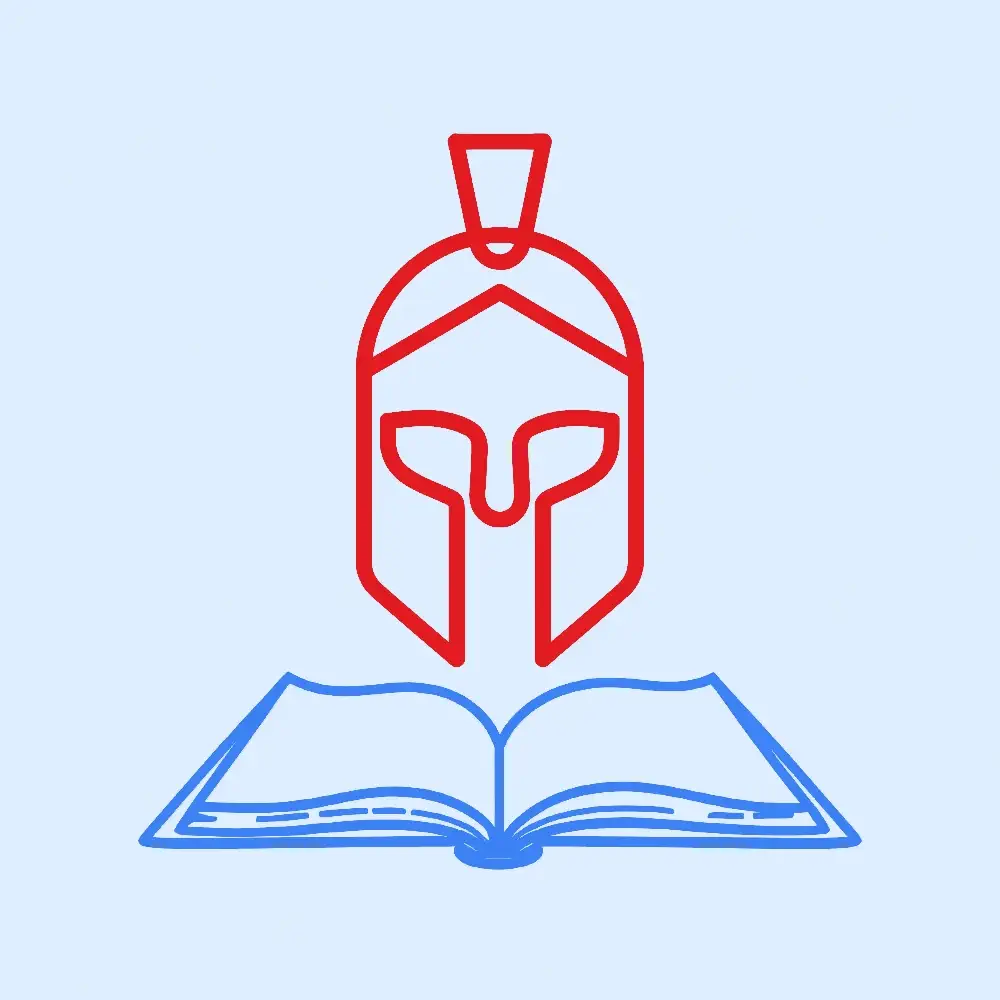Interleaving explained: how it improves learning
(5 minute read)
Academic success often demands more than knowing; some classes require procedural skills. They require practice. But not just any practice: the right kind, guided by cognitive science.
Practice is practice; can "the right kind" really make a meaningful difference? Here are the results observed in one study.
Adapted from Rohrer, D., & Taylor, K. (2007). The shuffling of mathematics problems improves learning, Instructional Science, 35(6), 481–498.

That's a 3x increase in physics exam performance by solving problems in a different order. This demonstrates just one under-appreciated principle of cognitive science called "interleaved practice".
Blocked practice means studying one topic at a time. Chapter 1 problems first, then chapter 2, then chapter 3.
Interleaved practice means mixing problems from different topics—like pulling questions randomly from all chapters.
At first, interleaving feels harder. But it better reflects how real exams work.

Why interleaving enhances learning efficiency
Imagine you're taking a physics exam. You’ve memorized several equations—but the real test isn’t just whether you can use them: it’s whether you can choose the correct equation for each problem. That’s the hard part: recognizing which solution applies in which situation. That decision-making is the skill that interleaving builds.
When you study with blocked practice, you might start by solving all the two-dimensional motion problems. You already know which formula you’ll need—your brain’s on autopilot, and you're unprepared for the exam.
With interleaved practice, each problem might require a different approach. You must actively think: Which concept fits here? That’s the exact skill exams test, and interleaving helps you master it.
Beyond the primary benefit of discriminating between topics, interleaving also promotes generally more transferable knowledge (Rohrer & Taylor, 2007). It becomes more flexible, and can apply to a wider variety of situations, even those you didn't practice. This flexible knowledge can apply to tricker, application-type exam questions (known in the field as "transfer questions"), getting you even better grades.
How to use interleaving for better learning results
Here's a word of caution: interleaving is actually harmful when you mix together completely unrelated topics, like physics and chemistry. But why?
Interleaving promotes discrimination: mixing things together helps you tell the difference between them (Birnbaum et al., 2013). As such, it's only helpful when things are easily confusable to begin with. Interleaving different subjects equates to task switching: your attention is fragmented and your learning outcomes become worse.
Interleave topics within the same subject. For example:
-
Mix physics: projectile motion with circular motion problems
-
Mix math: algebra with geometry questions
-
Mix chemistry: limiting reagent and percent yield questions
My favorite way to interleave is to input the practice problems into a flashcard app like Anki. Through the deck settings, you can have it feed you the practice problems in a random order. An additional benefit of this method is that these apps usually have a spaced repetition algorithm built in, so it will schedule you to revisit difficult problems at optimized intervals.
Interleaving facts and concepts
While interleaving tends to be most effective for procedural subjects, the same principles can also be applied to confusable facts and concepts in "knowledge-type" subjects like biology (Kang & Pashler, 2012). For instance, mitosis and meiosis are easily confused, so many biology professors really test your understanding of their differences. (Free) Recall them both in the same study session to help your brain distinguish them.
Congratulations, you saved yourself hours of future study with the power of science. Enjoy your newfound free time!
Bonus tip: interleaving and variable practice
And as a fun bonus tip: the varied practice that makes interleaving effective also applies to motor skills (Schmidt & Bjork, 1992). You can improve your free throw by shooting from multiple locations rather than just the free throw line. (What?!) You practice your ability to "parameterize your throw" (calculate force, velocity, angle, etc.) each time you switch shooting spots, creating a more flexible skill that is immune to external influences (like the pressure of a game). A more flexible skill built through variable practice is more capable of adapting to dynamic situations.
References:
Birnbaum, M. S., Kornell, N., Bjork, E. L., & Bjork, R. A. (2013). Why interleaving enhances inductive learning: The roles of discrimination and retrieval. Memory & Cognition, 41(3), 392–402. https://doi.org/10.3758/s13421-012-0272-7 Bjork, R. A., & Bjork, E. L. (2011). Making things hard on yourself, but in a good way: Creating desirable difficulties to enhance learning. In M. A. Gernsbacher, R. W. Pew, L. M. Hough, & J. R. Pomerantz (Eds.), Psychology and the real world: Essays illustrating fundamental contributions to society (pp. 56–64). Worth Publishers. Kang, S. H. K., & Pashler, H. (2012). Learning painting styles: Spacing is advantageous when it promotes discriminative contrast. Applied Cognitive Psychology, 26(1), 97–103. https://doi.org/10.1002/acp.180 Rohrer, D., Dedrick, R. F., & Stershic, S. (2015). Interleaved practice improves mathematics learning. Journal of Educational Psychology, 107(3), 900–908. https://doi.org/10.1037/edu0000001 Rohrer, D., & Taylor, K. (2007). The shuffling of mathematics problems improves learning. Instructional Science, 35(6), 481–498. https://doi.org/10.1007/s11251-007-9015-8 Schmidt, R. A., & Bjork, R. A. (1992). New conceptualizations of practice: Common principles in three paradigms suggest new concepts for training. Psychological Science, 3(4), 207–217. https://doi.org/10.1111/j.1467-9280.1992.tb00029.x



